Posted by
Sudhir Sharma
on
October 14, 2024

India, a land of diverse landscapes and rich biodiversity, stands as an ideal destination for tiger safaris. As a wildlife enthusiast or a traveler seeking an adventure into the heart of nature, choosing the right destination is crucial. Let's embark on a journey
through the best tiger safari destinations in India, each offering a unique blend of wildlife, landscapes, and cultural experiences.

Tiger safaris are not just about spotting the majestic big cat; they are about immersing yourself in the natural beauty, understanding conservation efforts, and appreciating the delicate balance of ecosystems. India, with its myriad national parks and reserves,
provides an unparalleled opportunity to witness tigers in their natural habitat.
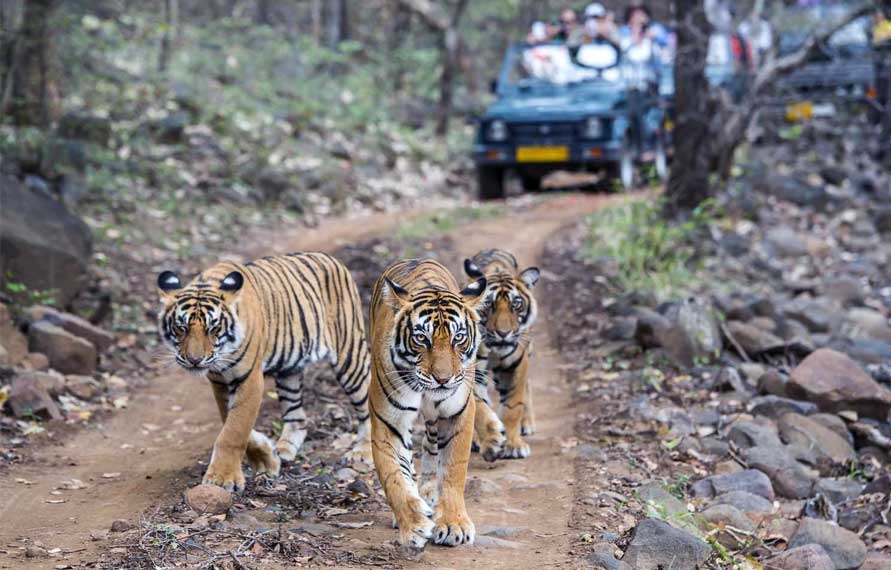
Our journey begins with Ranthambore, a park with historical significance and a treasure trove of biodiversity. As you explore the ruins of Ranthambore Fort, you might spot a tiger gracefully roaming amidst the ancient stones. The park's rich flora and fauna
enhance the overall safari experience, making it a favorite among wildlife enthusiasts.
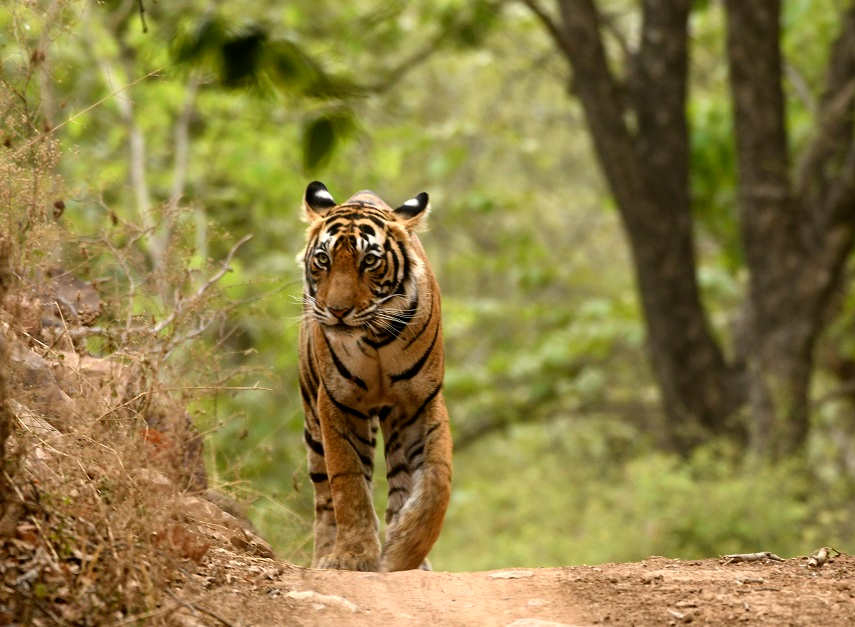
Venturing into the heart of India, we find Bandhavgarh, a park known for its lush greenery and a high population of tigers. The captivating landscapes serve as a backdrop to the thriving wildlife, offering a picturesque setting for your safari adventures. With
a significant tiger density, Bandhavgarh promises an encounter with the regal Bengal tiger.
Sundarbans National Park
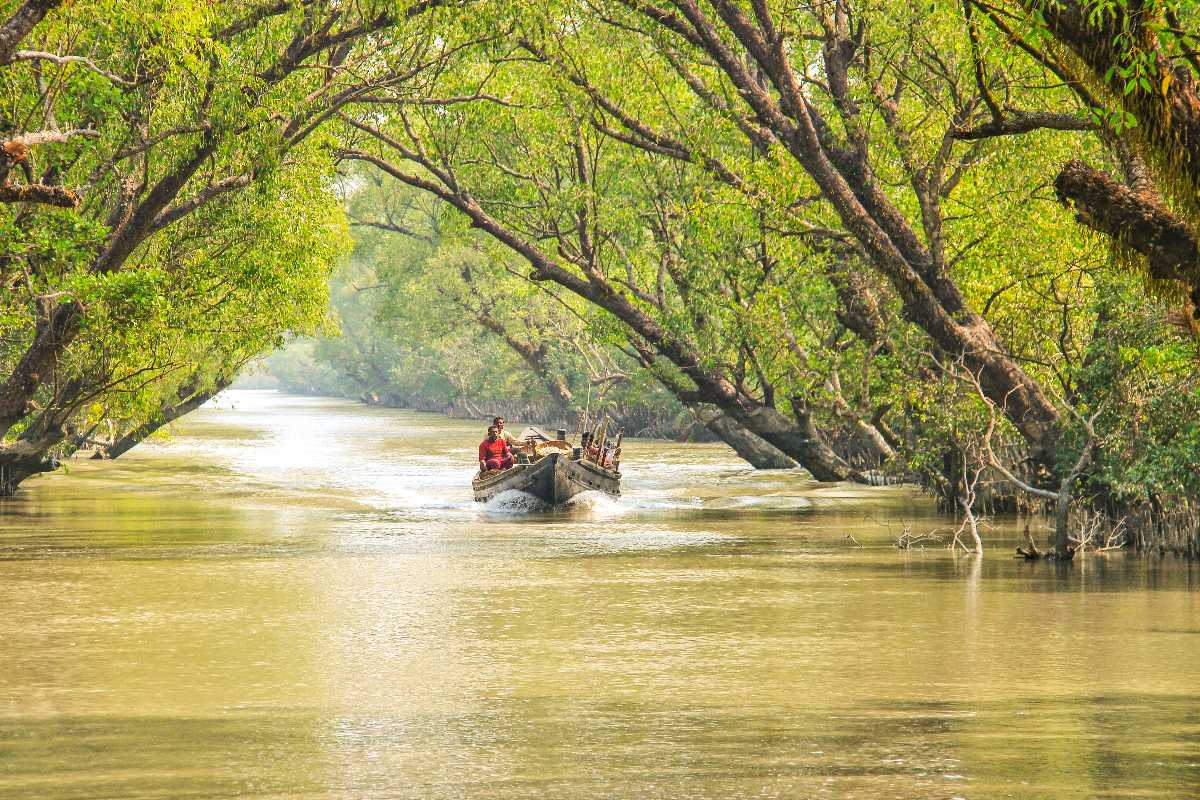
For a unique experience, head to the Sundarbans, where the mangrove ecosystem provides a dramatic setting for tiger safaris. Navigating the waterways on a boat adds an element of adventure, as you catch glimpses of rare Bengal tigers in their natural habitat.
It's a journey that combines the thrill of a safari with the tranquility of the water.
Jim Corbett National Park
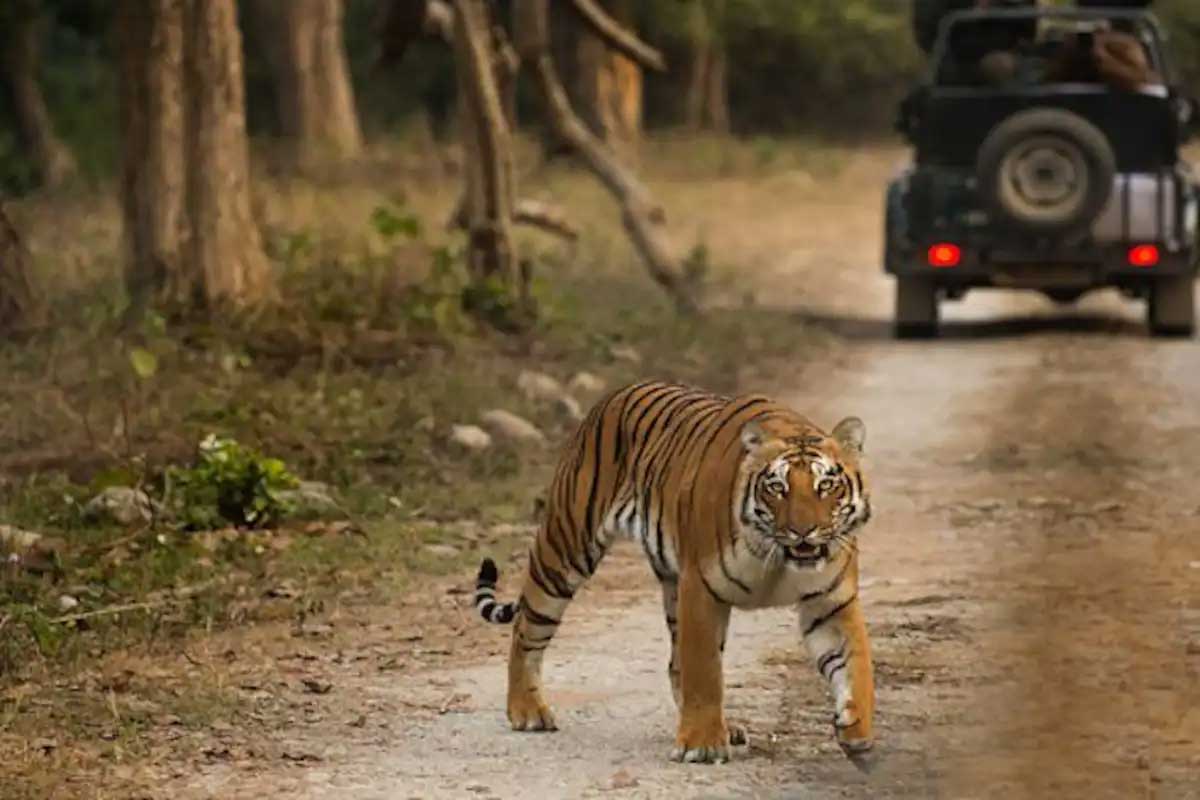
As we move towards the foothills of the Himalayas, Jim Corbett National Park welcomes us with open arms. Being the oldest national park in India, it boasts a diverse range of wildlife and landscapes. Imagine the thrill of spotting a tiger against the backdrop
of the majestic mountains, creating a scene straight out of a wildlife documentary.
For Adventure: Jim
Corbett Safari Booking
Kanha National Park

Inspired by Rudyard Kipling's "The Jungle Book," Kanha National Park enchants visitors with its lush forests and diverse wildlife. Apart from tigers, the park is home to a variety of species, contributing to the overall ecological balance. Engage in sustainable
tourism initiatives as you witness the beauty of nature unfolding before your eyes.
For Adventure: Kanha
National Park Safari Booking
Periyar National Park
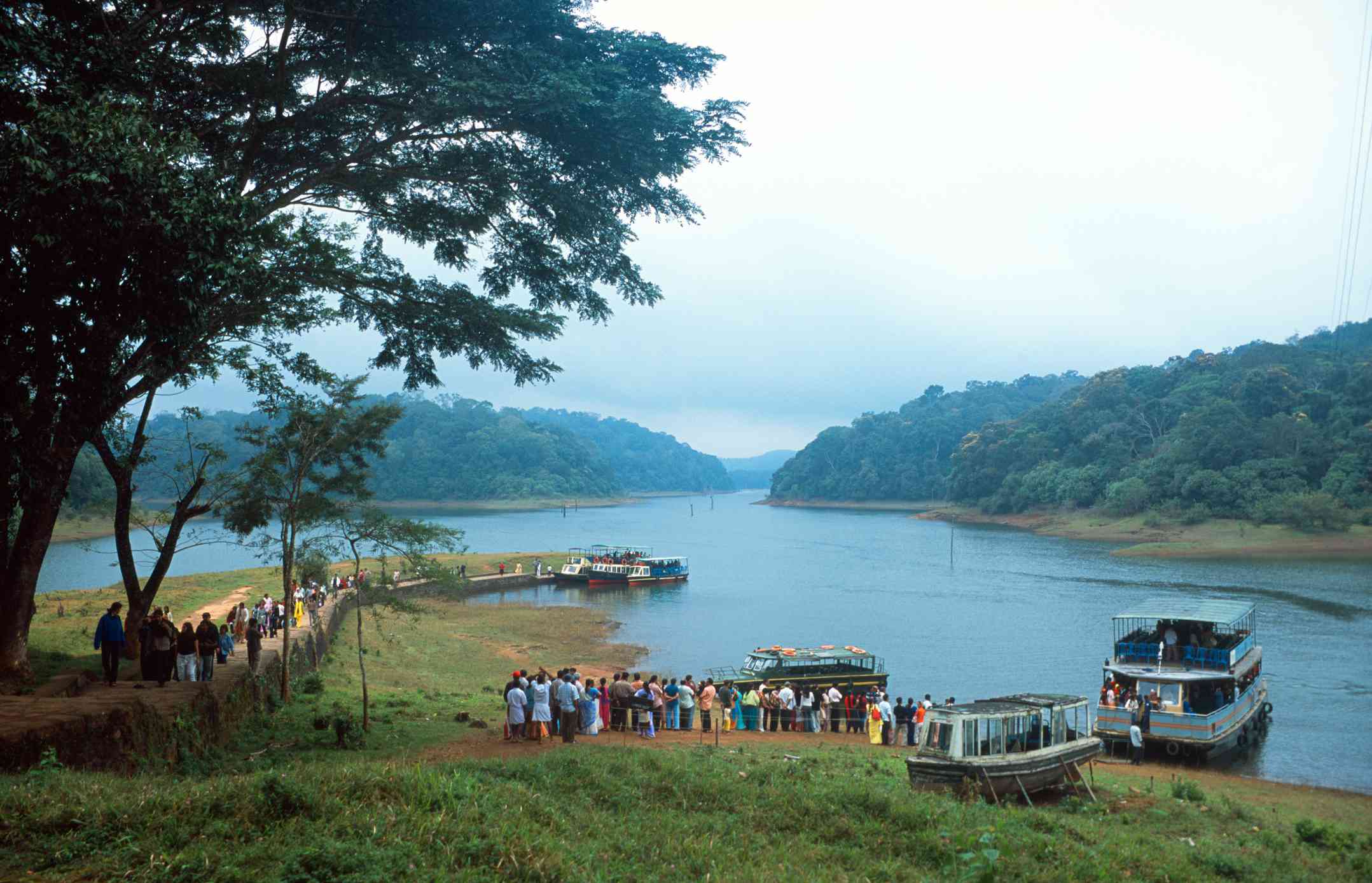
Down south, Periyar National Park captivates with its Southern charm. The highlight here is the boat safari on Periyar Lake, offering a unique perspective on wildlife. Amidst the tranquility, elephants and tigers share their habitat, creating a harmonious coexistence
that reflects the essence of responsible tourism.
Tadoba Andhari Tiger Reserve
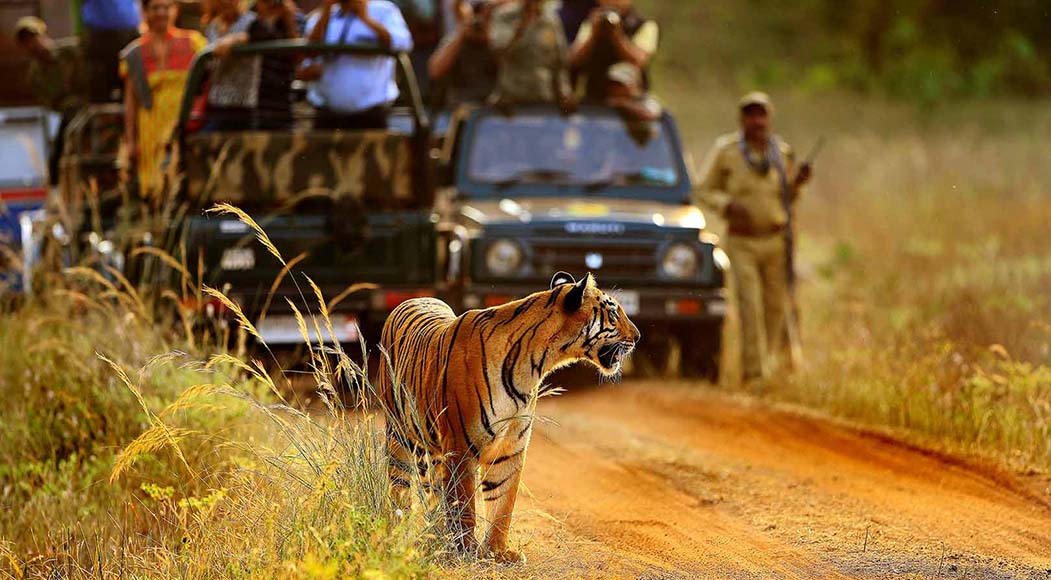
For those seeking an off-the-beaten-path adventure, Tadoba Andhari Tiger Reserve beckons. The tribal culture surrounding the reserve adds a unique cultural dimension to your safari experience. Witness the success stories of tiger conservation efforts while
immersing yourself in the raw beauty of this lesser-explored destination.
Nagarhole National Park
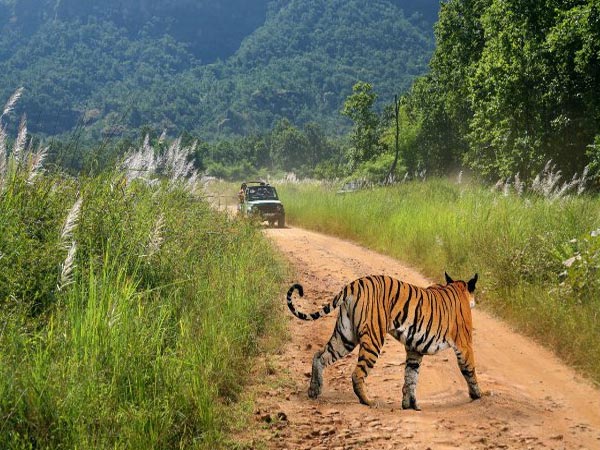
Serene landscapes await at Nagarhole National Park, where the beauty of nature unfolds at its own pace. Tigers coexist with elephants, creating a harmonious balance in this picturesque setting. Explore offbeat safari experiences that take you deep into the
heart of the forest, providing a close encounter with the untamed.
Pench National Park
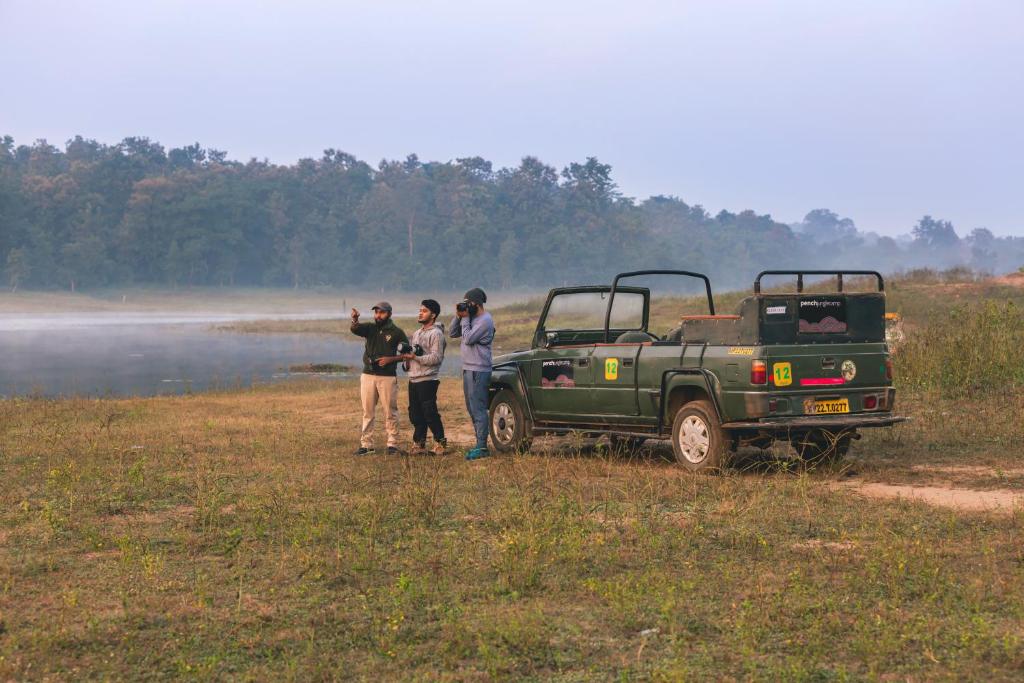
For photography enthusiasts, Pench National Park offers a canvas filled with wildlife opportunities. The park's literary connections, drawing inspiration from "The Jungle Book," add a layer of intrigue. Engage with conservation initiatives as you capture the
beauty of tigers and other inhabitants through your lens.
Sariska Tiger Reserve

Conveniently located near major cities, Sariska Tiger Reserve is an accessible yet enchanting destination. The historical Sariska Palace adds a touch of grandeur to your wildlife adventure. Witness the success stories of rehabilitation as the reserve continues
to thrive as a haven for the majestic Bengal tiger.
Panna National Park
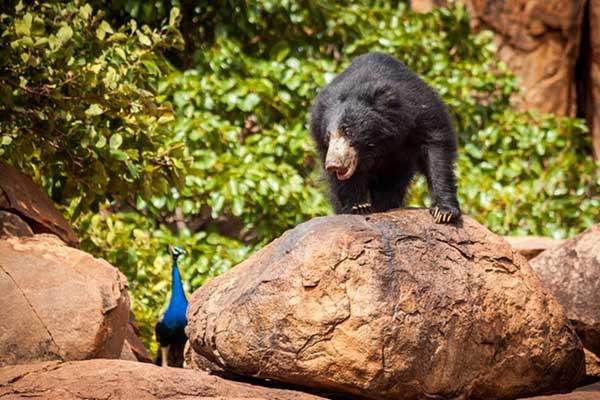
In the heart of India, Panna National Park stands as a testament to rewilding efforts. The Ken River and waterfalls create a picturesque backdrop for your safari adventures. Immerse yourself in birdwatching opportunities and witness the rejuvenation of a landscape
through dedicated conservation initiatives.
Hemis National Park
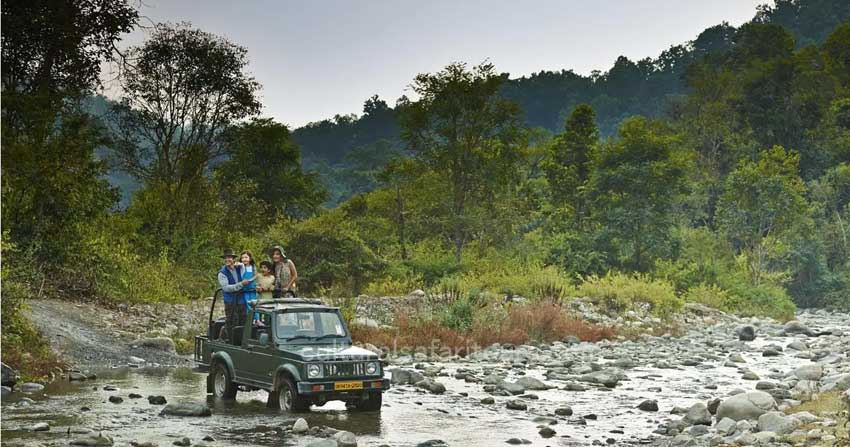
Venturing into the Himalayas, Hemis National Park offers a unique ecosystem for tiger enthusiasts. Snow leopards and tigers share the high-altitude terrain, creating a mesmerizing landscape. Dive into the cultural experiences of Ladakh while marveling at the
adaptability of these magnificent creatures.
Nameri National Park
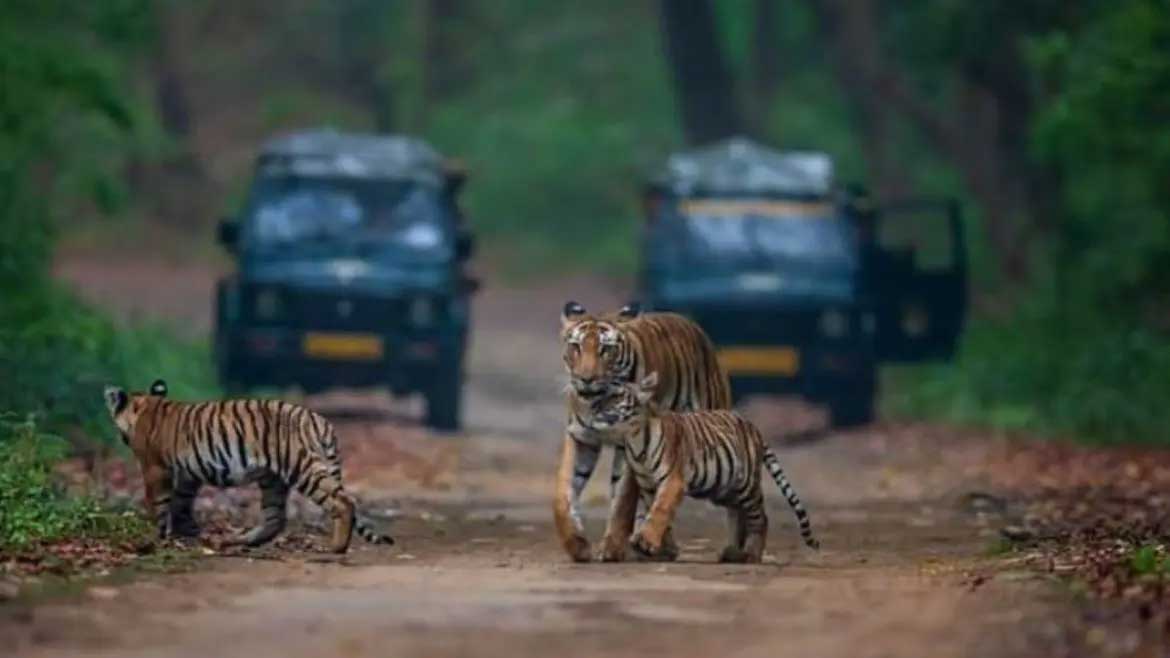
Our journey concludes in the northeastern biodiversity hotspot of Nameri National Park. The Jia Bhoroli River adds an adventurous touch to your safari, showcasing the eco-friendly tourism initiatives in the region. Explore the unique flora and fauna, marking
the end of an enriching tiger safari journey.
Conclusion
In the vast tapestry of India's wildlife sanctuaries and national parks, the best destination for tiger safaris is subjective, each offering a unique blend of experiences. Whether you prefer the historical charm of Ranthambore or the offbeat allure of Tadoba,
each destination contributes to the conservation of these magnificent creatures. As you plan your tiger safari, remember the importance of responsible tourism in preserving these ecosystems for generations to come.
FAQs
-
Is it guaranteed to spot a tiger during a safari?
-
While sightings are common, they depend on various factors, including the time of day, season, and the tiger's behavior.
-
Are there age restrictions for tiger safaris?
-
Most national parks have age restrictions to ensure the safety of visitors. Check with the specific park for their guidelines.
-
What is the best time of year for tiger safaris in India?
-
The ideal time is usually during the dry season, from October to April, when visibility is better.
-
How can I contribute to tiger conservation during my safari?
-
Many parks have initiatives for visitors to contribute to conservation efforts. Check with park authorities or local NGOs for options.
-
Are there accommodations within or near the national parks?
-
Yes, most national parks offer accommodations ranging from budget to luxury options. It's advisable to book in advance, especially during peak seasons.
|
Posted by
Sudhir Sharma
on
October 14, 2024

Sanjay Dubri National Park, nestled in the heart
of Madhya Pradesh, India, is a hidden gem for wildlife enthusiasts and nature lovers. Spanning over 1,500 square kilometers, this national park is rich in biodiversity and offers an unforgettable safari experience. Here’s everything you need to know to make
the most of your visit.

Why Visit Sanjay Dubri National Park?
-
Biodiversity: The park is home to a diverse range of flora and fauna. From majestic tigers and leopards to spotted deer and various species of birds, wildlife sightings are plentiful.
-
Unique Ecosystem: The landscape is characterized by dense forests, open grasslands, and seasonal rivers, creating a unique ecosystem that supports a wide variety of wildlife.
-
Adventure Activities: Beyond safaris, visitors can enjoy trekking, bird watching, and nature photography, making it a perfect destination for adventure seekers.
Planning Your Safari

Best Time to Visit:
The ideal time for a safari in Sanjay Dubri National Park is between October and June. The weather during these months is pleasant, and wildlife sightings are more frequent as animals venture out in search of water and food.
Safari Options:
- Jeep Safaris: Explore the park in open-top vehicles, providing an unobstructed view of the wildlife and landscape.
- Guided Tours: Consider hiring a local guide who can offer insights into the park’s ecology and wildlife behavior.
What to Bring:
- Binoculars: Perfect for bird watching and spotting distant wildlife.
- Camera: Capture the beauty of the park, but remember to respect wildlife by not using flash photography.
- Comfortable Clothing: Dress in layers, wear sturdy shoes, and consider neutral colors to blend in with the environment.
Wildlife Highlights
-
Tigers and Leopards: Spotting these elusive big cats is the highlight for many visitors. Sanjay Dubri is part of a larger tiger conservation program, enhancing your chances of a sighting.
-
Bird Species: With over 250 bird species, including migratory birds, the park is a paradise for birdwatchers.
-
Flora: The park’s vegetation ranges from deciduous forests to grasslands, home to medicinal plants and unique tree species.
Accommodation Options
-
Jungle Lodges: For a more immersive experience, consider staying in eco-friendly lodges or tent accommodations within or near the park.
-
Budget Hotels: Various options are available in nearby towns for those looking for more affordable stays.
Conservation Efforts
Sanjay Dubri National Park is not just a wildlife haven; it’s also a crucial area for conservation. Efforts are underway to protect the habitat and the species that inhabit it, ensuring that future generations can enjoy its natural beauty.
Conclusion
A safari in Sanjay Dubri National Park is more than just a trip; it’s an adventure into the heart of nature. Whether you’re a wildlife enthusiast or simply looking to escape the hustle and bustle of city life, this national park offers an enriching experience.
Plan your visit today and immerse yourself in the natural wonders of Madhya Pradesh
|
Posted by
DiscountsCode
on
August 30, 2024
|
Posted by
rekhasharma29
on
August 07, 2024

If you're looking for the adventurous encounter, where the thrill of wildlife spotting meets serenity in landscapes that is untouched, then a safari across the Chambal is your perfect getaway. In the heart of India, Chambal is that area stuffed with natural
beauty and a plethora of wildlife diversity that can't go unnoticed by any wild. safari enthusiast.
In this complete guide, you will get to know all about Chambal Safari from the reviews to tips regarding how and when to book, compared with other famous safaris, for instance, Ranthambore National Park.
Why Chambal Safari?
Chambal Safari is one into its kind. Draped against the Chambal valley, running through Uttar Pradesh, Madhya Pradesh, and Rajasthan, Chambal gives an ideal habitat for the wildlife and the tourists. The Chambal River, blessed with unpolluted water and a
typical ecosystem, supports a large number of species, including some critically threatened species, such as the Gharial, a type of crocodile. Why a Chambal Safari must make it to your bucket list:
Exquisite Wildlife: The Chambal River also offers a good variety of wildlife—the allusive Gharial crocodile, the endangered Mugger crocodile, and the majestic river dolphins. A person can find different species of birds like the Indian Skimmer
and the Peregrine Falcon.
Exquisite scenic beauty: Lying in the surroundings of the Chambal valley, the region is endowed with beautiful landscape comprising ravines that are rugged, river banks that are lush with green vegetation, and expanses of grasslands. The
natural beauty of this area is overall attractive for making excellent photographs and peaceful surroundings.
Off-the-beaten-path: Compared to other show venues for wildlife safaris, the Chambal Safari provides an experience that is far more peaceful thanks to fewer visiting tourists. This makes it an upfront, direct encounter with undisturbed nature.
Chambal Safari Booking: Tips and Information
Chambal Safari Booking is fairly easy, but there are a few important things to keep in mind so that it goes off without a hitch:
Choose the Right Season:
Anything from October to March is hands down the best period to visit Chambal. The weather is pleasant, and chances of wildlife sightings are more assured during this season. If summer months are too hot, then the monsoon season can affect accessibility.
Pre-plan:
Although Chambal Safari does not yield as much tourist traffic as any other destination does, for a safari, it is still wise to book ahead for better time slots with the guides.
Select a Reputable Operator
Opt for any good operator with fine reviews-majority fine-bred, experience in organizing safaris at Chambal. They can provide you with good guides, ensure safety, and take care of comfort during the visit.
Inclusions:
Varying safari packages will have what they call inclusions. Could be boat rides, guided tours, meals; find out exactly what your package entails to circumvent surprises.
Chambal Safari or Ranthambore National Park
Though Chambal Safari is a different experience altogether, it may be compared to other famous safari destinations such as Ranthambore National Park. Here's a small comparison that will help you make up your mind regarding the safari:
Wildlife Diversity:
Ranthambore represents mostly Bengal tigers, though it is actually located in Rajasthan. Other animals that represent this park include leopards, sloth bears, and countless bird species. Chambal is, however, quite famous for its many riverine species of
Gharial crocodile and river dolphins.
Safari Experience:
At Ranthambore National Park, one gets to see traditional safari experiences. This place is very common for jeep turtles and regular canter rides. What is different about Chambal Safari is that one leaves for the boating ride at the Chambal River, witnessing
wildlife and lands from an entirely different perspective.
Scenic Beauty:
Both destinations are breathtakingly beautiful, but each differs in its own special way. Ranthambore is covered with forests and has rugged terrain, while Chambal is a land of serene river landscapes and dramatic ravines.
Registration :
Reservations are bound to be more competitive for
Ranthambore National Park safari since it is one of the more well-known parks, especially during peak seasons. The Chambal Safari is not as crowded but would require advance booking in order to assure your place in the planned tour. Chambal Safari Reviews:
What Travelers Say
Chambal Safari Reviews: What Travelers Are Saying
Those who have been to Chambal Safari talk about its uniqueness and serenity all the time. Following are some general themes from recent reviews include
Amazing Wildlife Sightings: Many visitors have returned, noting such near sightings of the rare Gharial crocodile and river dolphins. The boat rides offer a special way to view wildlife in their natural habitat.
Peaceful Experience: Quite a few people out there while describing Chambal Safari say it was a peaceful and quiet experience. Away from the hustle-bustle and with views chiseled out spectacularly by nature through the river and the landscapes
across, there is nothing but peace and fun for one.
Expert Guides: Knowledgeable local guides taking Chambal Safaris are one of the chief delights for which travelers value them. Knowledgeable about the local ecosystem and wildlife, they add much to the overall experience and lay out great
insights.
Well-Maintained Facilities: Many reviews commend the well-maintained facilities and services that safari operators provided. Comfortable boats, professional guides, good communication are some of the contributory factors to a positive experience.
Be Prepared for Your Chambal Safari
Keep the following important suggestions in mind to interest your ride with the Chambal Safari:
Pack Wisely: Lightweight, breathable clothing, hat, sunscreen, and insect repellent. Binoculars and a camera with a zoom lens are a recommended addition to your pack for enhanced wildlife experiences.
Stay Hydrated: Do make sure to stay hydrated, particularly if you are visiting in summer. Carry a bottle of water and drink a lot of liquid.
Respect Wildlife—Do what your guide says and respect the wildlife; do not tease or make a noise that will startle the animals, and keep at a safe distance.
Be Patient: It is in the nature of
wildlife to be unpredictable, so one needs loads of patience. Enjoy the journey and the surroundings; there is enough beauty in them even if all species of your target aren't spotted.
Conclusion
Chambal Safari offers a very unique and stupefying experience for both wildlife enthusiasts and nature lovers alike. Unique wildlife, scenic beauty, and tranquil atmosphere are some of the terms that well describe it. Whether it is a Chambal Safari booking
or making a comparison with other places for the booking of Ranthambore National Park, this one is a hidden jewel that makes you a promise of memories never forgettable. Sure enough, planning, choosing the right operator, and preparing ahead will guarantee
one heck of a memorable and fulfilling safari experience.
|
Posted by
Sanchari Travels
on
June 05, 2024

Birdwatching in Alleppey: A Haven for Avian Enthusiasts
If you're a birdwatching enthusiast,
Alleppey (Alappuzha) in Kerala, India, should be on your bucket list. Known for its picturesque backwaters and serene landscapes, Alleppey offers a rich habitat for a diverse range of bird species.
Why Alleppey?
Vembanad Lake: This sprawling lake is a hotspot for birdwatching. It attracts numerous migratory birds, especially during the winter months. You can spot species like the Purple Heron, Kingfishers, and various ducks.
Kumarakom Bird Sanctuary: Though technically near Kottayam, this sanctuary is accessible from Alleppey. Spread over 14 acres, it’s home to a plethora of bird species including egrets, darters, and the Siberian Crane during the migratory season.
Pathiramanal Island: Located in the middle of Vembanad Lake, this small island is a paradise for birdwatchers. Accessible by boat, it provides an excellent opportunity to see both local and migratory birds in a relatively undisturbed environment.
Best Time to Visit
The ideal time for birdwatching in Alleppey is from November to February when the weather is pleasant, and migratory birds are in abundance. Early mornings and late afternoons are the best times to catch sight of the birds as they are most active during these
periods.
Tips for Birdwatching in Alleppey
Bring Binoculars: Essential for spotting distant birds.
Wear Camouflage Colors: Helps blend into the environment, so you don't startle the birds.
Stay Quiet and Patient: Birds are sensitive to noise, and patience often rewards you with rare sightings.
Hire a Local Guide: They can help you spot and identify birds that you might otherwise miss.
Conclusion
Whether you're a seasoned birder or a curious nature lover, Alleppey's rich biodiversity and tranquil settings provide an unforgettable birdwatching experience. Pack your gear and get ready to immerse yourself in the natural beauty of this Kerala gem! For a
comfortable stay, check out the
homestays or
resorts in Alleppey, which offer a unique and cozy experience.
Happy birdwatching!
|
Posted by
Sudhir Sharma
on
May 18, 2024

Embarking on a
Jim Corbett Safari is a thrilling journey into the heart of nature, where every turn unveils new wonders and wildlife encounters. Before you set out on your expedition, understanding the booking process is crucial to ensure a seamless and memorable experience.

Booking Options
1. Online Booking

Booking a Jim Corbett Safari in this digital age is easier than ever. Several authorized websites and platforms facilitate online reservations, allowing you to secure your safari slots in advance. Simply visit the official website of
Jim Corbett National Park or trusted booking portals to check availability, select your preferred safari option, and make payment securely online.
2. On-Site Booking
For those who prefer a more traditional approach, on-site booking facilities are available at various entry gates of Jim Corbett National Park. Upon arrival, head to the designated booking counters and interact with the park authorities to inquire
about safari availability. While on-site booking offers flexibility, it is advisable to arrive early, especially during peak tourist seasons, to secure your preferred safari slots.
Safari Options
1. Jim Corbett Jeep Safari
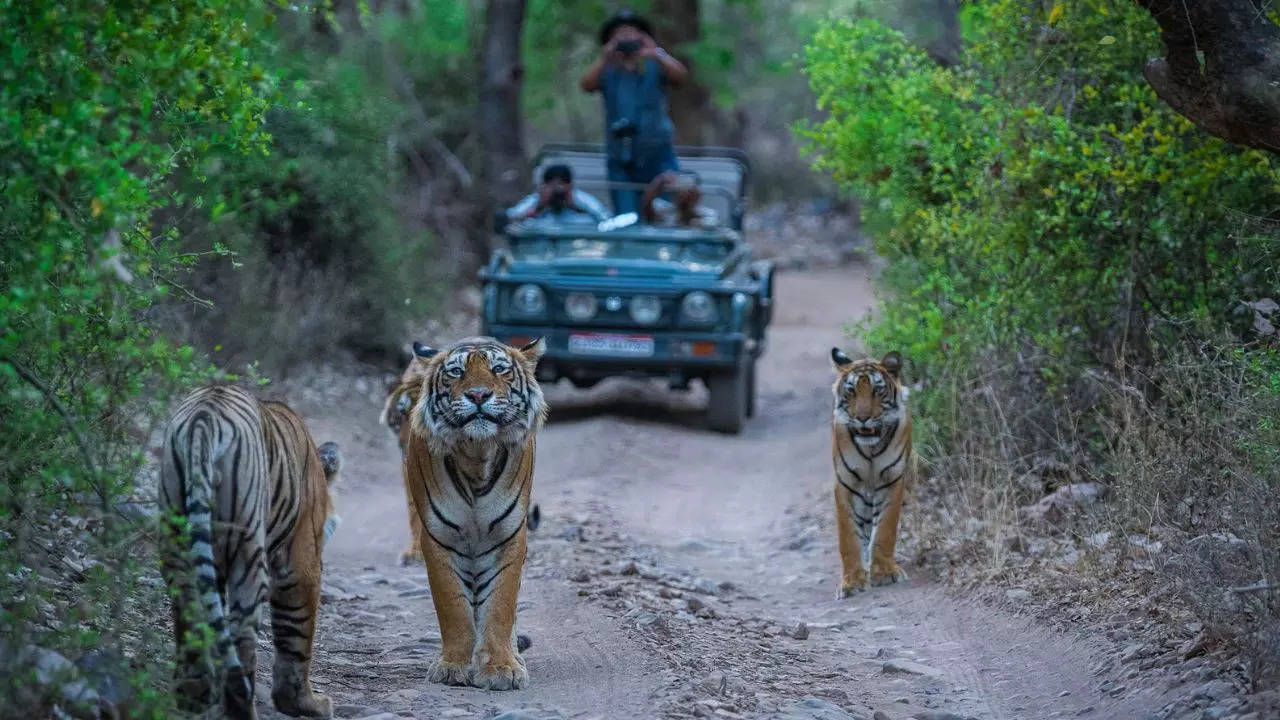
Hop aboard a sturdy 4x4 vehicle and embark on a thrilling Jeep Safari through the wilderness of Jim Corbett National Park. Led by experienced guides, Jeep Safaris offer the opportunity to explore remote corners of the park and encounter diverse
wildlife species in their natural habitat. From majestic tigers to elusive leopards, every moment is filled with excitement and awe.
2. Jim Corbett Canter Safari
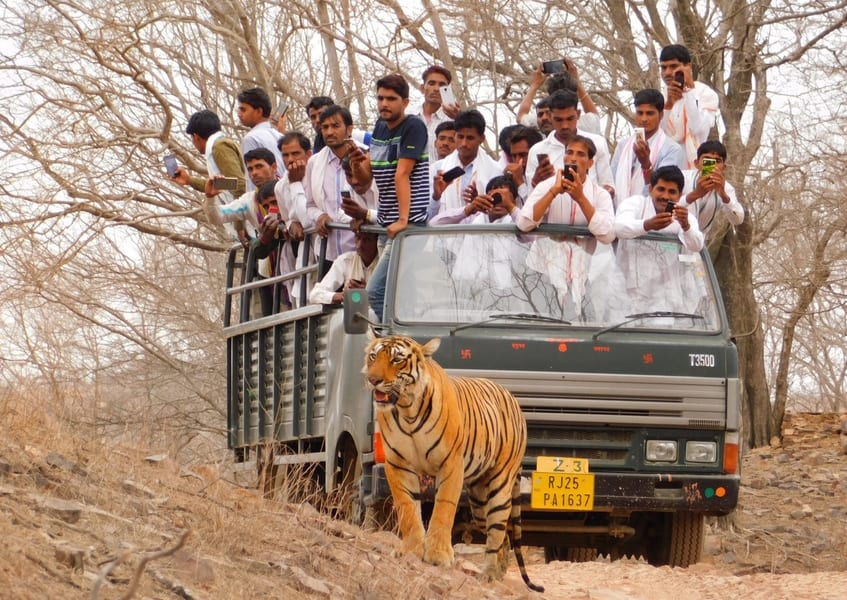
Ideal for larger groups and families, Canter Safaris provide a comfortable and panoramic wildlife experience. Accommodating up to 16 passengers, these safari vehicles traverse designated routes within the park, offering excellent opportunities for
wildlife sightings and photography. Sit back, relax, and immerse yourself in the beauty of the wilderness as expert naturalists guide you through the mesmerizing landscapes.
3. Jim Corbett Nature Walks

For a more intimate experience with nature, opt for guided Nature Walks led by knowledgeable naturalists. These leisurely walks take you on scenic trails through the park's lush forests, where you can observe diverse flora and fauna up close. From
chirping birds to colorful butterflies, every step unveils a new marvel of the natural world, making Nature Walks a must-do for nature enthusiasts.
Booking Tips
- Plan Ahead: To avoid disappointment, book your safari slots well in advance, especially during peak seasons.
- Check Availability: Before finalizing your travel dates, check the availability of safari options and preferred zones.
- Follow Guidelines: Familiarize yourself with the park rules and regulations, and adhere to safety guidelines during safari experiences.
- Pack Essentials: Don't forget to carry essentials such as sunscreen, insect repellent, binoculars, and a camera to capture memorable moments.
Conclusion
Booking a Jim Corbett Safari is the first step towards an unforgettable wilderness adventure. Whether you choose Jeep Safari, Canter Safari, or Nature Walks, each experience promises excitement, exploration, and a deeper connection with nature.
So, book your safari today and embark on a journey of discovery amidst the untamed beauty of Jim Corbett National Park.
Experience the thrill of Jim Corbett Safari Booking and unleash your adventurous
spirit amidst the wilderness of Jim Corbett National Park!
|
Posted by
Sudhir Sharma
on
January 25, 2024

Bandhavgarh Safari Booking Service

Explore the wilderness of Bandhavgarh with our premium Safari Booking Service. Immerse yourself in the beauty of nature and witness the majestic wildlife that Bandhavgarh National Park has to offer. At Cultural Safari Tours, we strive
to provide you with an unforgettable safari experience.
Why Choose Us?
-
Expert Guides: Our experienced guides are well-versed in the flora and fauna of Bandhavgarh. They ensure you have a knowledgeable and enjoyable safari.
-
Customized Packages: Tailor your safari experience with our customizable packages. Whether you're a wildlife enthusiast or a casual observer, we have the perfect package for you.
-
Comfortable Accommodations: Relax in comfort after your safari in our handpicked accommodations. We ensure a seamless blend of luxury and nature.
-
Easy Booking Process: Our user-friendly online booking system makes it convenient for you to secure your spot on the safari of your choice.
Explore Bandhavgarh National Park

Bandhavgarh National Park is renowned for its rich biodiversity and the highest density of Bengal tigers in India. Beyond tigers, the park is home to a variety of wildlife, including leopards, deer, and numerous bird species. The diverse
landscapes, from dense forests to open grasslands, make Bandhavgarh a haven for nature lovers.
Safari Options
Jeep Safari
Embark on an exciting Jeep Safari to navigate the rugged terrain of Bandhavgarh. Our open jeeps provide an unobstructed view, allowing you to capture breathtaking moments in the heart of the wilderness.
Elephant Safari
For a unique and close-up experience with wildlife, choose our Elephant Safari. Traverse the park on the back of these majestic creatures and witness animals in their natural habitat from a different perspective.
Booking Information
Visit our website at www.culturalsafaritours.com to Bandhavgarh
Safari booking. Simply select your preferred dates, choose your safari type, and complete the easy booking process. For any inquiries, our customer support team is available to assist you.
Don't miss the opportunity to create memories that will last a lifetime. Book your Bandhavgarh Safari with Cultural Safari Tours now!
|
Posted by
Susan Sharma
on
December 08, 2023

Aditya Dicky Singh was the first registered member of IndianWildlifeClub.com. This wildlife photographer was a conservationist at heart who left a void in the conservation community of Ranthambhore and the world when he succumbed to a heart attack at age
57, on 6 September, 2023.
Singh won the Carl Zeiss Award for Conservation in 2012 and the Sanctuary Wildlife Photographer of the Year award in 2011. He is a co-author of the book "Noor: Queen of Ranthambore" about the tigress Noor.
Singh bought a patch of land near Ranthambore Fort in 2000. Eventually, he had accumulated 50 acres of land and he decided to reforest the area. he and wife Poonam kept buying patches of adjacent land which they fenced off and left unattended. It took a
decade for trees to grow back on their land.
Just about a year ago, I had a conversation with Aditya on Zoom about his passion for conservation and photography. The video podcast is available at the link
https://youtu.be/SneSB3RDYo8
Please watch the video and write your comments in the comment section of the video.
|
Posted by
Sudhir Sharma
on
December 05, 2023

Jaisalmer, known for its majestic sand dunes and stunning architecture, holds a hidden gem within its boundaries. Nestled amidst the arid landscape lies the Desert National Park, a paradise for birdwatching
enthusiasts. This article takes you on a journey through the captivating world of avian wonders in Jaisalmer’s Desert National Park, uncovering its best-kept secret.
Must Read: Wildlife & Birding in Desert National Park Jaisalmer
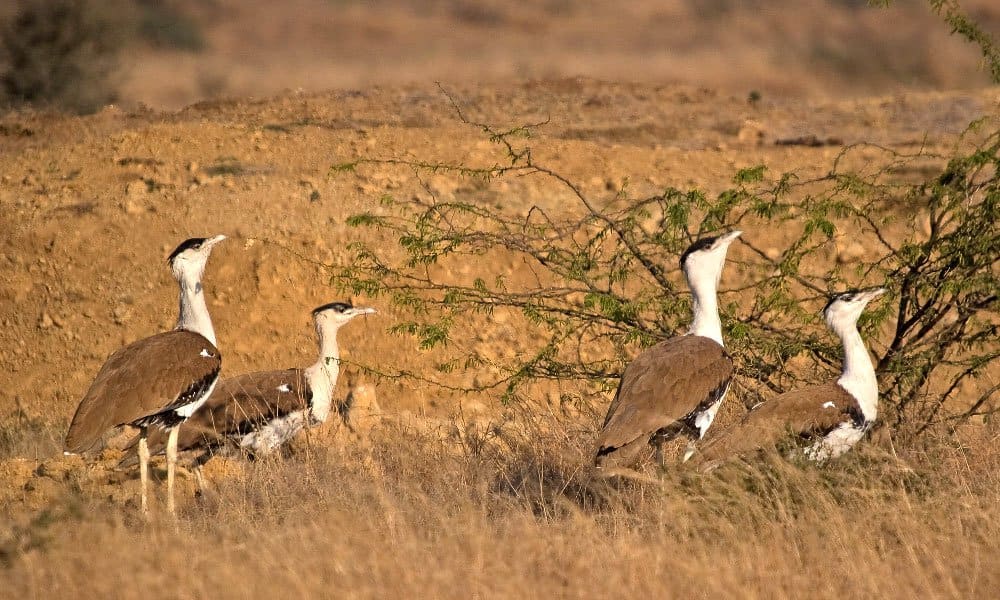
1. Introduction
Have you ever imagined spotting vibrant birds amidst the vast stretches of sand? The Desert National Park in Jaisalmer offers a unique opportunity for nature lovers and birdwatchers to witness a mesmerizing spectacle.
This article unveils the lesser-known side of Jaisalmer, where the desert and the avian world converge to create an enchanting experience.
2. Discovering the Desert National Park
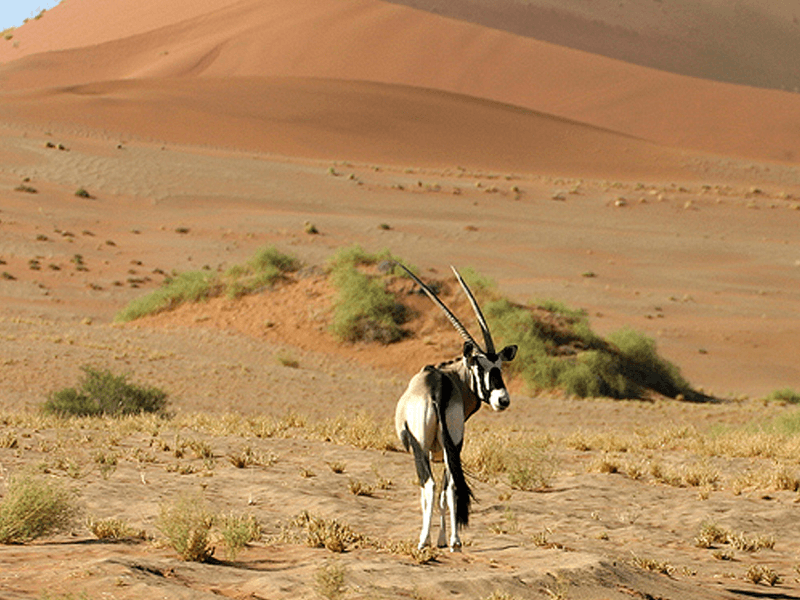
The Desert National Park, spanning over 3,162 square kilometers, encompasses the Thar Desert in the western part of Rajasthan, India. It is renowned for its rich biodiversity and serves as a crucial habitat for various
flora and fauna species. The park’s unique ecosystem, characterized by sand dunes, rocky terrain, and scrubland, creates an ideal environment for a diverse range of bird species.
3. A Haven for Avian Enthusiasts
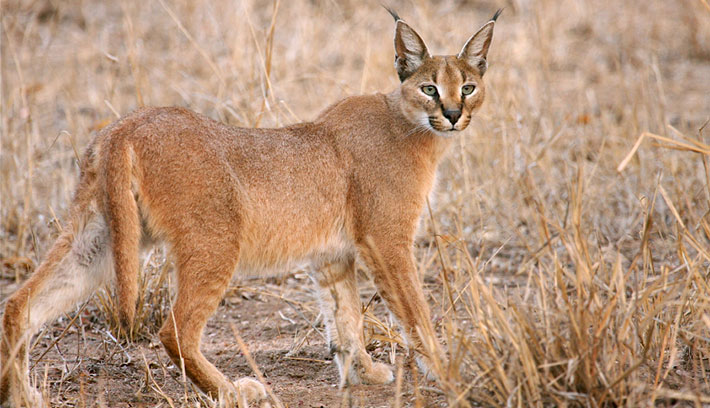
As you step into the Desert National Park, you’ll be greeted by a symphony of avian melodies. The park boasts an impressive collection of over 200 bird species, making it a paradise for birdwatchers. From majestic
raptors soaring high above to small, colorful songbirds nestled among the thorny bushes, the park offers an opportunity to witness the fascinating world of birds in their natural habitat.
4. Exploring the Bird Species
Greater Hoopoe-Lark:
- With its distinct crested head and a long, thin beak, the Greater Hoopoe-Lark stands out in the desert landscape. Its unique mating dance and melodious call are a treat for birdwatchers.
- Demoiselle Crane:
- The graceful Demoiselle Crane, with its slender body and elegant plumage, migrates to the Desert National Park during winter. Witnessing flocks of these beautiful birds taking flight is a sight to behold.
- Indian Courser:
- The Indian Courser, known for its exceptional camouflage skills, blends seamlessly with its surroundings. Its elusive nature adds an element of thrill to the birdwatching experience.
5. Birdwatching Tips and Techniques
To make the most of your birdwatching adventure in Jaisalmer’s Desert National Park, consider the following tips and techniques:
- Patience is key: Birds can be elusive, so it’s essential to stay calm and patient while waiting for the perfect moment to observe them.
- Equip yourself with binoculars and field guides: Enhance your birdwatching experience by carrying binoculars and field guides. Binoculars allow you to observe birds up close, while field guides help
you identify different species based on their physical characteristics and behavior.
- Dress appropriately: Wear light-colored and comfortable clothing to blend with the desert surroundings and ensure a pleasant experience. Additionally, consider wearing a hat and applying sunscreen to
protect yourself from the sun.
- Choose the right time: Mornings and evenings are the best times for birdwatching. During these hours, birds are often more active and vocal. The soft light during sunrise and sunset also adds a magical
touch to your birdwatching experience.
- Practice silence and stillness: When you spot a bird, try to minimize noise and sudden movements. Birds are sensitive to disturbances, and remaining quiet and still increases your chances of observing
their natural behaviors.
- Learn bird calls and songs: Familiarize yourself with the calls and songs of different bird species. This knowledge can help you locate birds even when they are not visible, as their distinct vocalizations
can give away their presence.
- Observe habitats and feeding patterns: Birds have specific habitats and feeding preferences. Pay attention to their preferred habitats, such as water bodies, trees, or open grasslands. Also, observe
their feeding patterns, whether they are foraging on the ground or catching insects in mid-air. This information can guide you to prime birdwatching spots within the park.
- By following these tips and techniques, you can maximize your chances of spotting and enjoying the diverse avian life within Jaisalmer’s Desert National Park.
6. Conservation Efforts
The conservation of birds and their natural habitats is of utmost importance to ensure their survival and protect the delicate ecosystem of the Desert National Park. Conservation organizations and local authorities
work tirelessly to preserve the park’s biodiversity through various initiatives, including:
Habitat preservation: Efforts are made to conserve and restore the unique habitats within the park that are vital for bird species’ survival.
Research and monitoring: Scientific research and monitoring programs help gather data on bird populations, behavior, and migration patterns, aiding in their conservation.
Community involvement: Local communities are engaged in conservation activities, raising awareness about the significance of birds and their habitats.
Sustainable tourism practices: Responsible tourism practices are promoted to minimize the impact on bird habitats and maintain the ecological balance of the park.
By supporting these conservation efforts and practicing responsible birdwatching, visitors can contribute to the long-term preservation of Jaisalmer’s Desert National Park and its avian treasures.
7. Conclusion
Jaisalmer’s Desert National Park stands as a testament to the incredible biodiversity that thrives even in the harshest of environments. With its diverse bird species and breathtaking landscapes, this hidden gem offers
a unique birdwatching experience for enthusiasts and nature lovers alike. By immersing yourself in the tranquil beauty of the park, practicing patience, and following birdwatching techniques, you can embark on a journey of discovery and connection with the
avian world. Visit Jaisalmer’s Desert National Park, and unlock the secret that lies within its enchanting realm.
Frequently Asked Questions (FAQs)
What is the best time to visit Jaisalmer’s Desert National Park for birdwatching?
- The best time to visit for birdwatching is during the winter months, from November to February. During this time, many migratory bird species visit the park, adding to the diversity of avian life.
- Can beginners participate in birdwatching at the Desert National Park?
- Absolutely! Birdwatching is a hobby that can be enjoyed by beginners and experienced enthusiasts alike. The park offers a range of bird species, making it an excellent place for beginners to start their birdwatching journey.
- Are there guided birdwatching tours available in Jaisalmer?
- Yes, there are guided birdwatching tours available in Jaisalmer. These tours are led by experienced naturalists who are knowledgeable about the local bird species and their habitats. Joining a guided tour can enhance your
birdwatching experience and provide valuable insights.
- Are there any specific regulations or guidelines to follow while birdwatching in the Desert National Park?
- Yes, it is essential to follow certain guidelines to ensure the well-being of the birds and their habitats. Some common guidelines include maintaining a safe distance from the birds, avoiding disturbing their natural behavior,
refraining from littering, and respecting the park’s rules and regulations.
- Can photography be done during birdwatching in the Desert National Park?
- Yes, photography is allowed during birdwatching in the park. However, it is essential to prioritize the well-being of the birds and their habitats. Maintain a respectful distance, avoid using flash photography, and follow
ethical photography practices that minimize disturbances to the birds and their environment.
- Explore the avian wonders of Jaisalmer’s Desert National Park and embark on a captivating birdwatching adventure that will leave you in awe of nature’s beauty.
|
Posted by
Sudhir Sharma
on
December 05, 2023

India, a land of enchanting diversity and pristine landscapes, is adorned with an array of national parks that epitomize its rich biodiversity. From the rugged terrains of the Himalayas to the lush forests
of the Western Ghats, these protected areas showcase the incredible variety of flora and fauna that call India home. In this comprehensive guide, we present the top 5 national parks that stand as the epitome of India’s wildlife wonders, beckoning both nature
enthusiasts and adventure seekers alike.
1. Jim Corbett National Park: Roaming with the Tigers
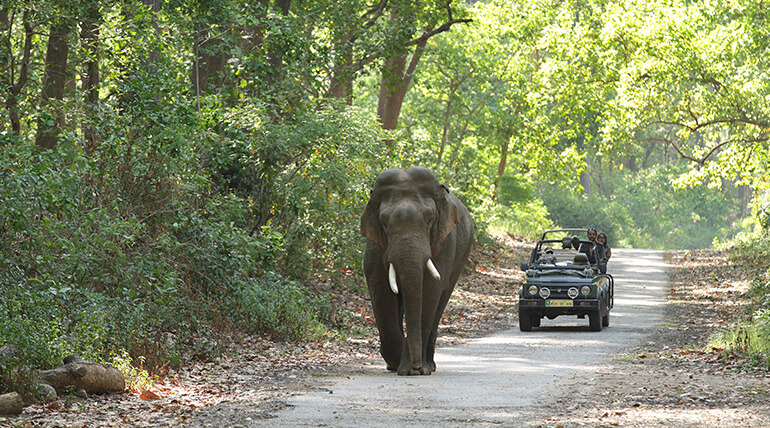
Nestled in the heart of Uttarakhand, Jim Corbett National Park is a living testament to India’s dedication to wildlife conservation. Named after the legendary British hunter turned conservationist, the park is celebrated
for its iconic Bengal tigers. It’s the oldest national park in the country, offering a thrilling rendezvous with nature.
The diverse landscapes within the park, ranging from dense forests to grasslands, house an array of wildlife. Aside from tigers, you can spot leopards, elephants, deer, and a wide range of avian species. Jim
Corbetta safari booking like Jeep safaris and guided tours provide an intimate connection with the wilderness and an opportunity to witness these majestic creatures in their natural habitat.
2. Ranthambore National Park: Where History Meets Wilderness
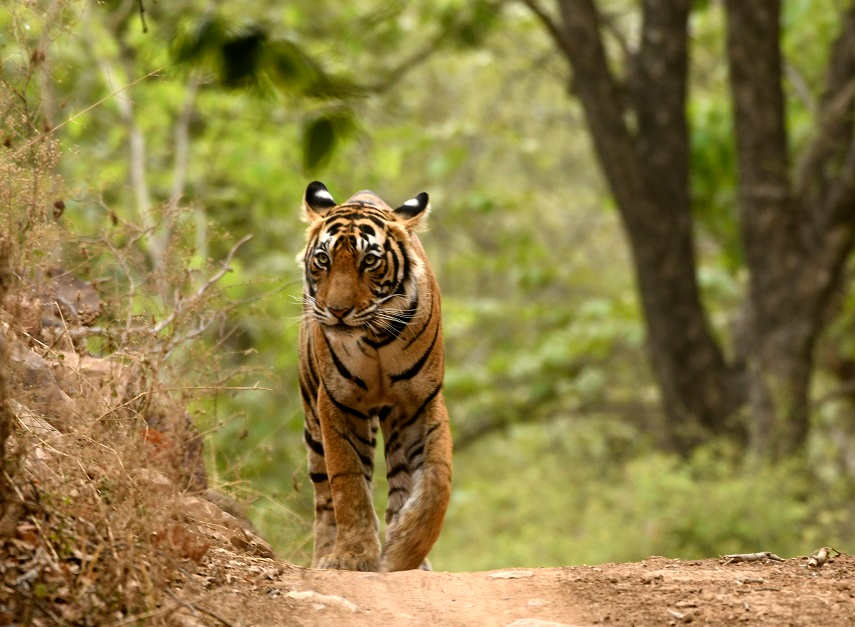
Ranthambore National Park, situated in Rajasthan,
is a captivating fusion of history and wildlife. The majestic Ranthambore Fort, intertwined with the park’s rugged terrain, adds an aura of mystique to the experience. However, it’s the iconic Bengal tigers that truly steal the show here.
The park’s deciduous forests and water bodies provide an ideal habitat for these elusive predators. Jeep safaris and canter rides take visitors on an exhilarating journey through the park, increasing the chances of
spotting tigers, along with other residents like leopards, sloth bears, and various species of deer. Ranthambore’s unique blend of history and wildlife makes it a must-visit destination for nature enthusiasts.
3. Kaziranga National Park: Where Rhinos Roam Free
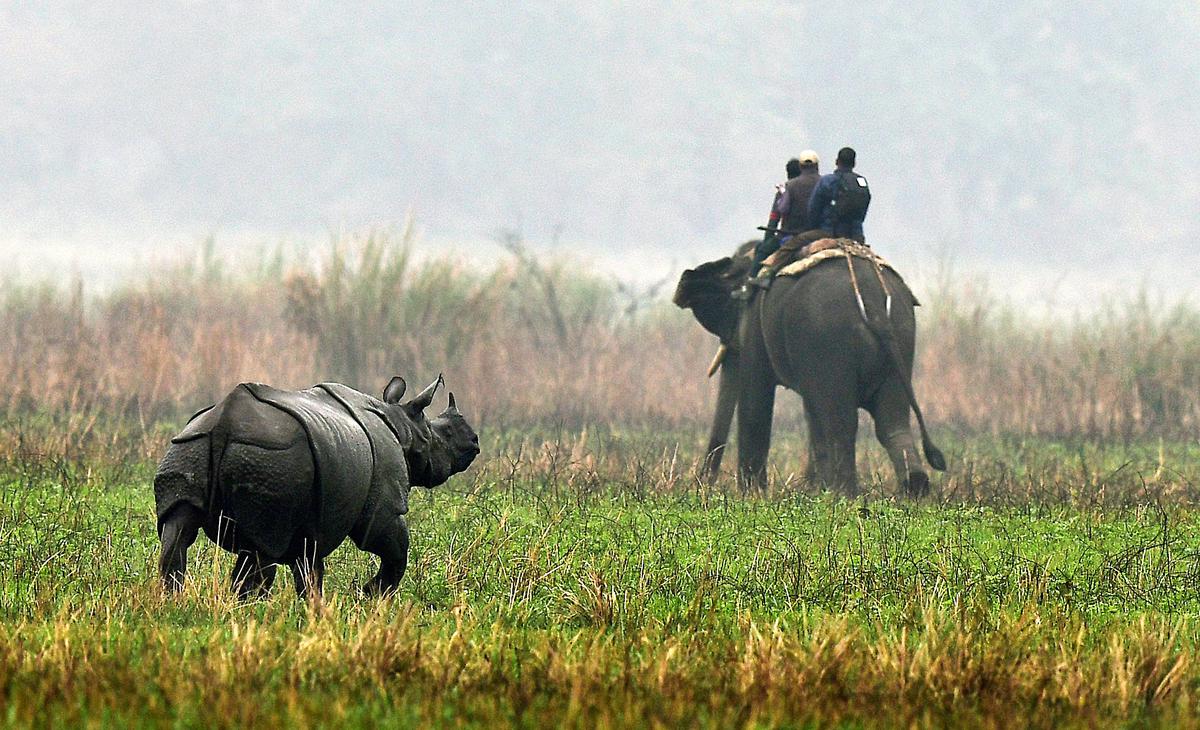
Venturing to India’s northeastern corner, we encounter the enchanting Kaziranga
National Park Safari. This UNESCO World Heritage site is renowned for its successful conservation of the one-horned Indian rhinoceros. Sprawling across the floodplains of the Brahmaputra River in Assam, Kaziranga boasts unique landscapes
that support a diverse array of wildlife.
The park’s acclaimed elephant safaris offer an opportunity to observe rhinos, elephants, wild water buffaloes, and an assortment of bird species up close. Tigers and leopards also inhabit the park, though they often
remain elusive. Kaziranga’s commitment to rhino conservation and its breathtaking landscapes make it a true gem of India’s wildlife heritage.
4. Bandhavgarh National Park: Tiger’s Kingdom
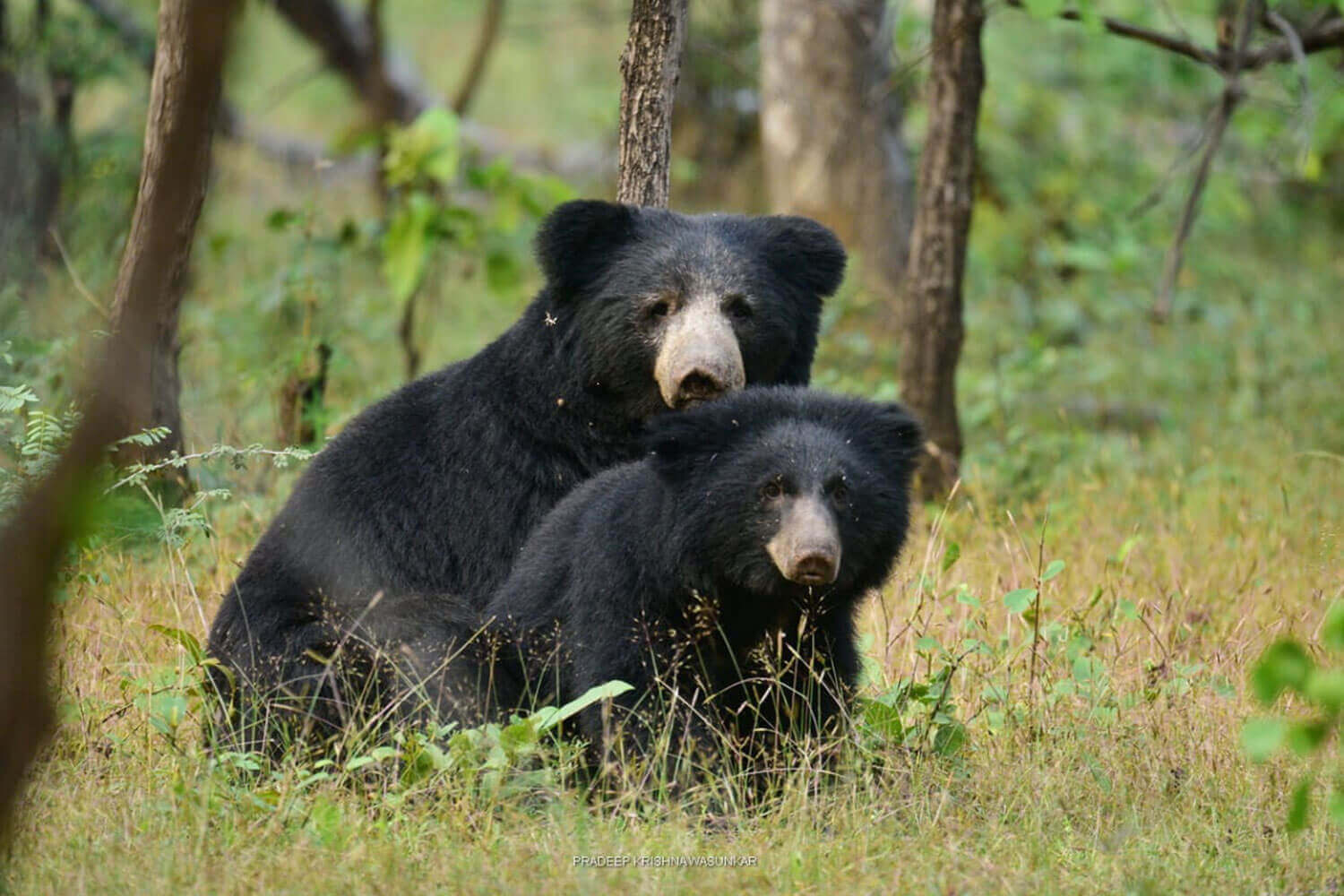
Nestled in the heart of Madhya Pradesh, Bandhavgarh National Park exudes a sense of regal charm, owing to its substantial tiger population. This park is not only known for its density of tigers but also for its lush
landscapes, ranging from dense forests to open meadows.
Bandhavgarh Safari Booking and specialized photography
tours allow visitors to witness the charismatic tigers in their natural habitat. Beyond the tigers, the park is also home to a variety of wildlife, including leopards, sloth bears, and diverse avian species. Whether you’re an avid photographer or a wildlife
enthusiast, Bandhavgarh promises an enthralling experience.
5. Sundarbans National Park: Mangrove Majesty
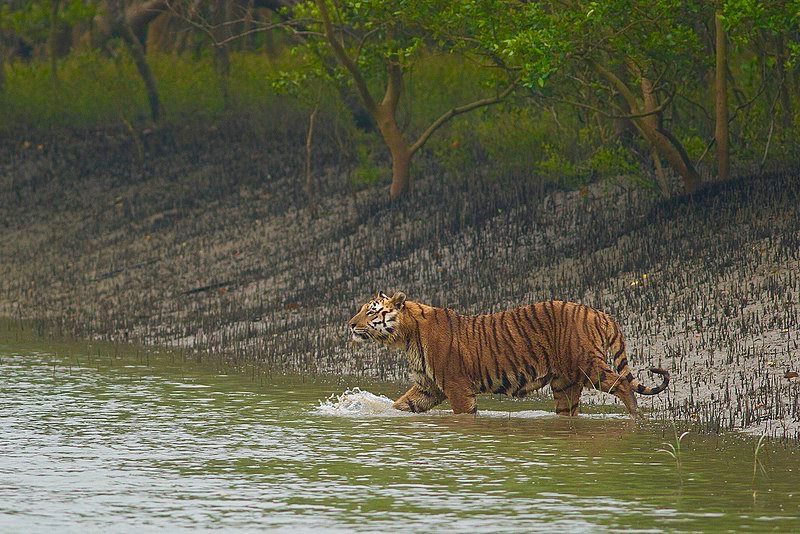
Exploring the eastern fringes of India unveils the mesmerizing Sundarbans National Park. Shared between India and Bangladesh, this unique UNESCO World Heritage site boasts the largest mangrove forest in the world.
The park’s intricate network of tidal waterways and marshlands is home to the elusive royal Bengal tiger.
Navigating the waterways on specialized boats offers a chance to witness the park’s extraordinary biodiversity, including saltwater crocodiles, spotted deer, and various bird species. The dynamic interaction between
land and water in the Sundarbans creates a distinct and captivating wildlife experience.
In Conclusion
India’s top 5 national parks are a testament to the country’s commitment to preserving its natural heritage and fostering a deep connection between humans and wildlife. From the awe-inspiring Himalayan landscapes
to the tranquil mangrove forests, each park offers a unique opportunity to immerse yourself in the beauty and diversity of India’s wildlife.
Whether you’re an adventure seeker, a wildlife enthusiast, or simply someone who appreciates the wonders of nature, these national parks beckon you to embark on an unforgettable journey. Witness the magnificence of
tigers, rhinos, elephants, and more in their natural habitats, and create memories that will last a lifetime. Plan your expedition to these captivating national parks and discover the splendor of India’s wilderness like never before.
|